How Redis distributed lock prevents cache breakdown
Cache breakdown
The difference from cache penetration is that cache breakdown refers to hot data that is not in the cache but exists in the database.
For example: hot news on the homepage, hot data with a very large number of concurrent visits, if the cache expires and fails, the server will query the DB. At this time, if a large number of concurrent queries are made to the DB, the DB may be overwhelmed instantly.
Drawed a simple diagram, as shown below:
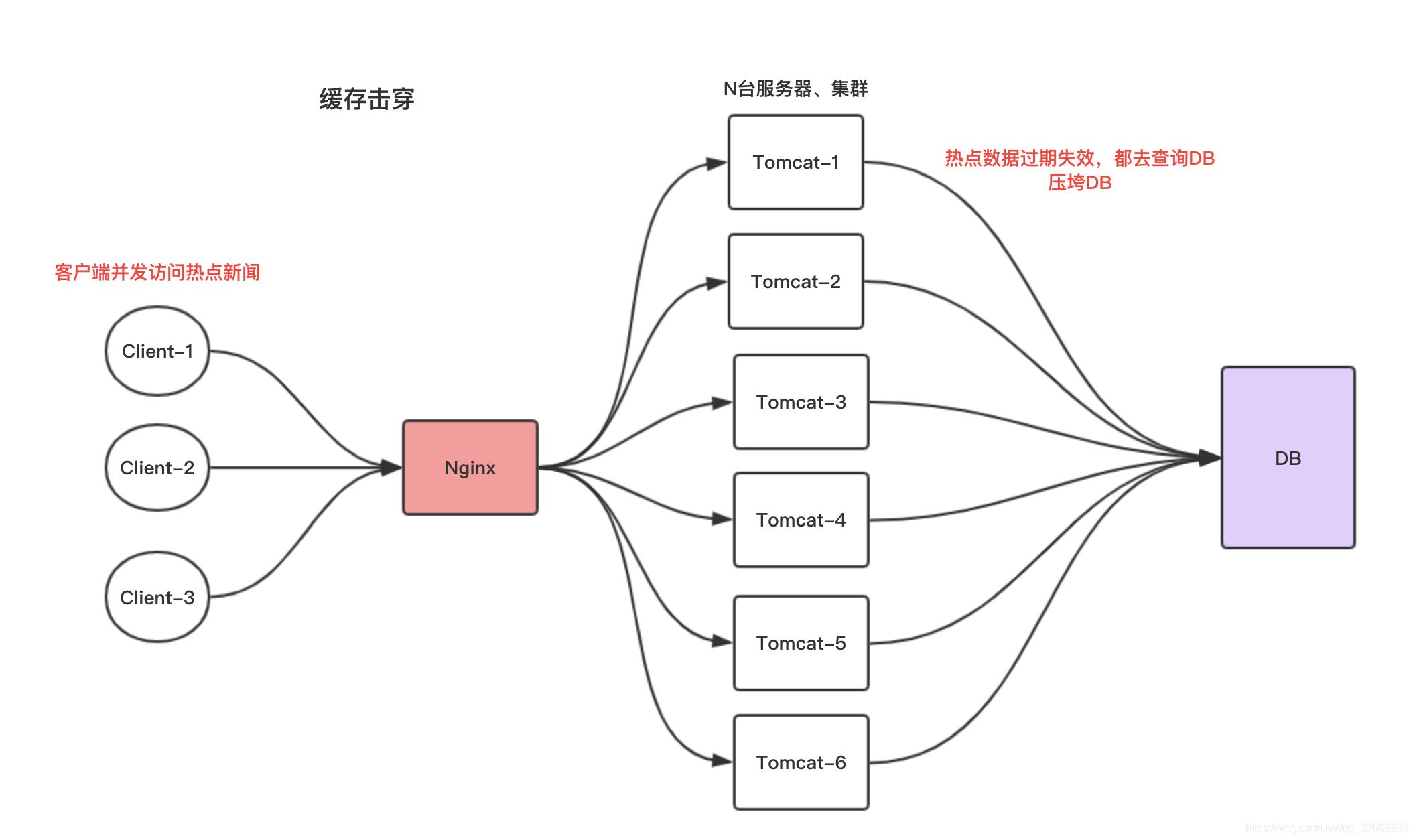
Solution: DB query plus distributed lock.
Unlocked situation
Before solving the problem, first take a look at the unprocessed code and operation conditions.
Query product details code based on product ID
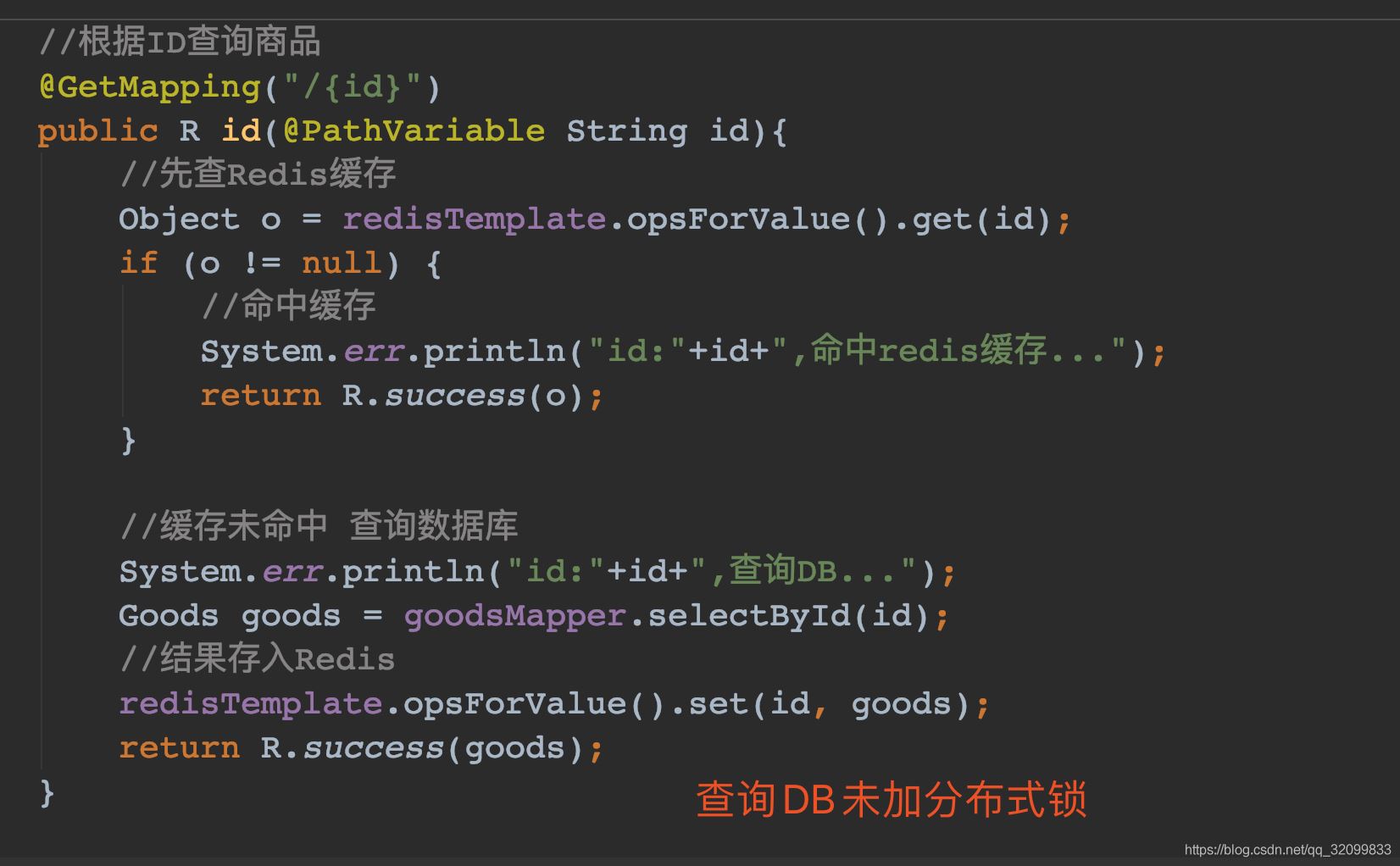
Clear the Redis cache and open 5 threads for concurrent access testing. The test code is as follows :
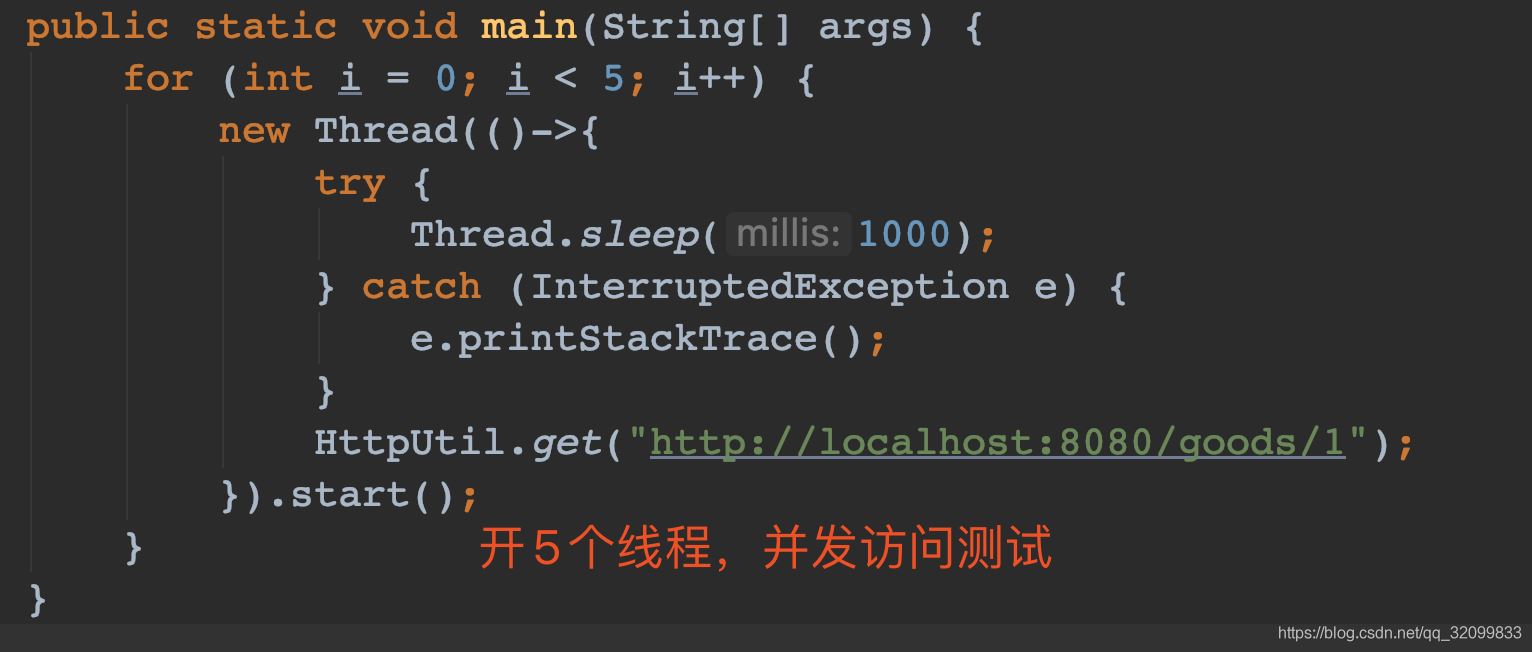
We expected that the DB would only be queried once, and the next four queries would be fetched from the Redis cache, but the result was: 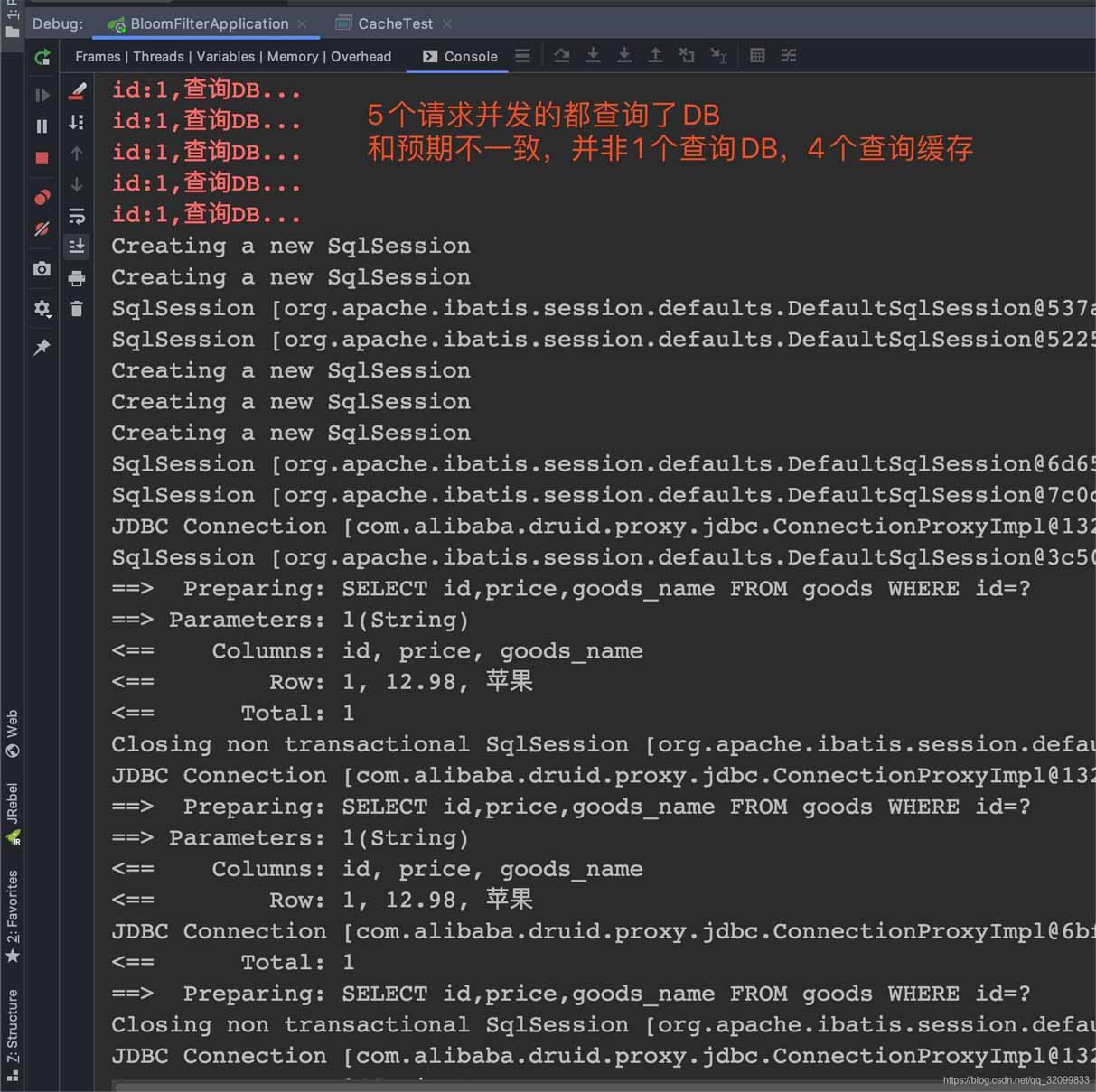
There is no distributed lock, and the result is expected. However, the container puts a lot of pressure on the DB.
If it is a single server, just use Java's synchronization lock directly
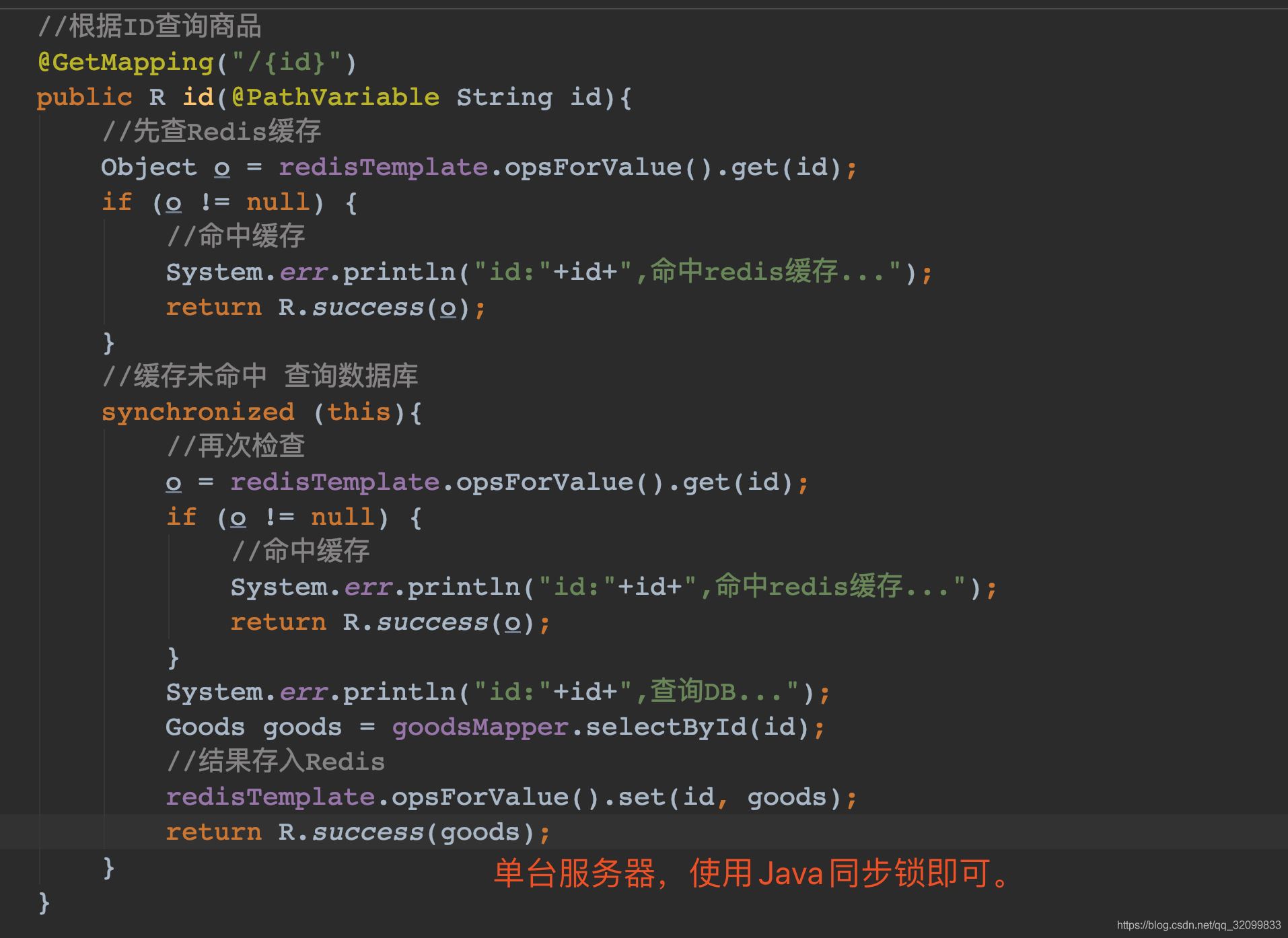
Unfortunately, usually after The client will deploy a cluster, and Java's synchronization lock cannot implement distributed locks.
Redis distributed lock solves cache breakdown
Java's built-in lock can only be applied on a single machine and cannot be distributed. It can be achieved using Redis. Distributed lock.
Code after adding distributed lock
//根据ID查询商品
@GetMapping("/{id}")
public R id(@PathVariable String id){
//先查Redis缓存
Object o = redisTemplate.opsForValue().get(id);
if (o != null) {
//命中缓存
System.err.println("id:"+id+",命中redis缓存...");
return R.success(o);
}
//缓存未命中 查询数据库
String lockKey = "lock" + id;
//加锁,10s后过期
for (;;) {
if (redisTemplate.opsForValue().setIfAbsent(lockKey, System.currentTimeMillis(), 10L, TimeUnit.SECONDS)) {
//加锁成功的线程,再次检查
o = redisTemplate.opsForValue().get(id);
if (o != null) {
//命中缓存
System.err.println("Thread:" + Thread.currentThread().getName() + ",id:"+id+",命中redis缓存...");
//释放锁
redisTemplate.delete(lockKey);
return R.success(o);
}
//仍未命中
System.err.println("Thread:" + Thread.currentThread().getName() + ",id:" + id + ",查询DB...");
Goods goods = goodsMapper.selectById(id);
//结果存入Redis
redisTemplate.opsForValue().set(id, goods);
//释放锁
redisTemplate.delete(lockKey);
return R.success(goods);
}
//竞争不到锁,暂时让出CPU资源
Thread.yield();
}
}Start 5 threads for concurrent access. The result is as follows:
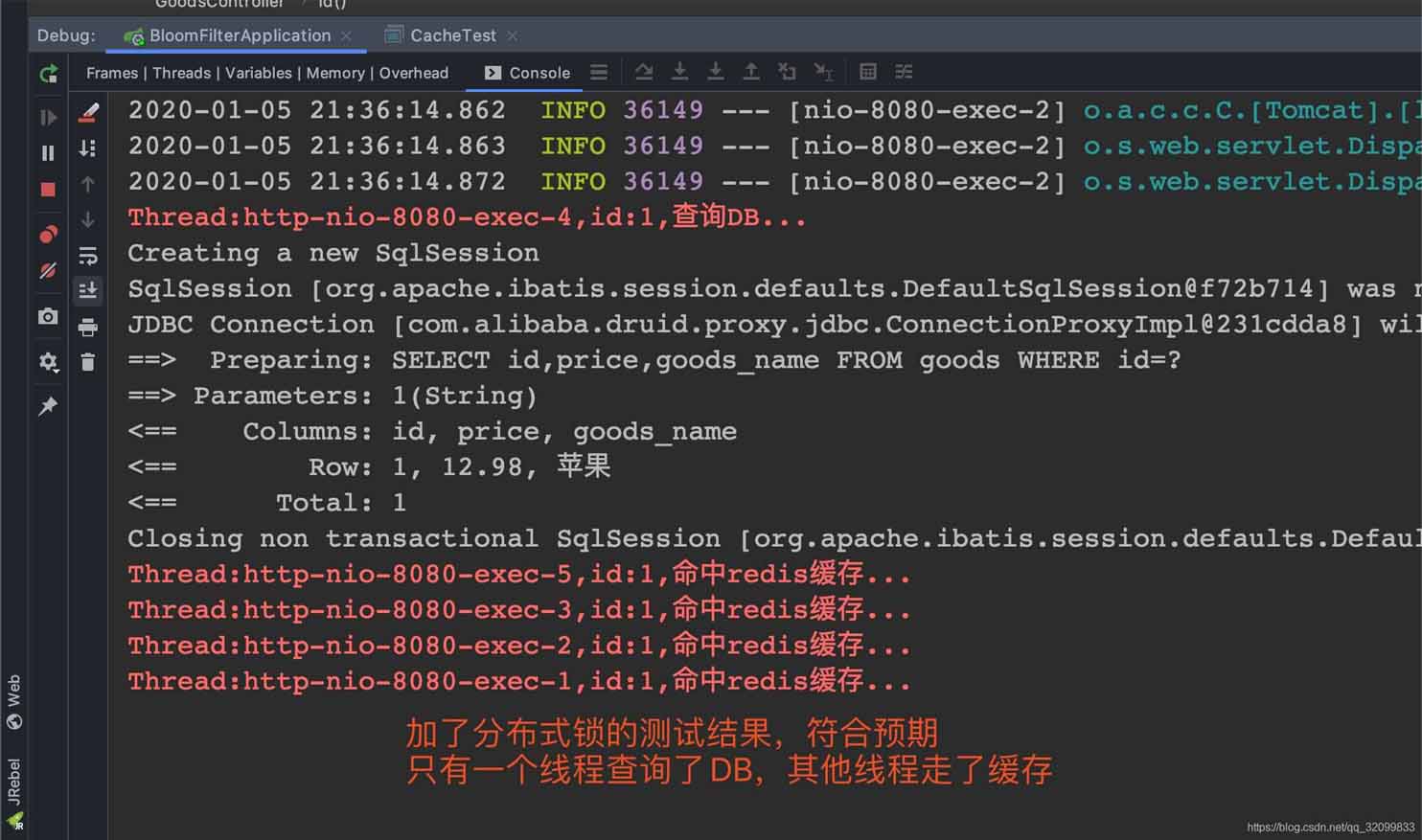
The above is the detailed content of How Redis distributed lock prevents cache breakdown. For more information, please follow other related articles on the PHP Chinese website!

Hot AI Tools

Undresser.AI Undress
AI-powered app for creating realistic nude photos

AI Clothes Remover
Online AI tool for removing clothes from photos.

Undress AI Tool
Undress images for free

Clothoff.io
AI clothes remover

AI Hentai Generator
Generate AI Hentai for free.

Hot Article

Hot Tools

Notepad++7.3.1
Easy-to-use and free code editor

SublimeText3 Chinese version
Chinese version, very easy to use

Zend Studio 13.0.1
Powerful PHP integrated development environment

Dreamweaver CS6
Visual web development tools

SublimeText3 Mac version
God-level code editing software (SublimeText3)

Hot Topics
 1385
1385
 52
52
 How to build the redis cluster mode
Apr 10, 2025 pm 10:15 PM
How to build the redis cluster mode
Apr 10, 2025 pm 10:15 PM
Redis cluster mode deploys Redis instances to multiple servers through sharding, improving scalability and availability. The construction steps are as follows: Create odd Redis instances with different ports; Create 3 sentinel instances, monitor Redis instances and failover; configure sentinel configuration files, add monitoring Redis instance information and failover settings; configure Redis instance configuration files, enable cluster mode and specify the cluster information file path; create nodes.conf file, containing information of each Redis instance; start the cluster, execute the create command to create a cluster and specify the number of replicas; log in to the cluster to execute the CLUSTER INFO command to verify the cluster status; make
 How to clear redis data
Apr 10, 2025 pm 10:06 PM
How to clear redis data
Apr 10, 2025 pm 10:06 PM
How to clear Redis data: Use the FLUSHALL command to clear all key values. Use the FLUSHDB command to clear the key value of the currently selected database. Use SELECT to switch databases, and then use FLUSHDB to clear multiple databases. Use the DEL command to delete a specific key. Use the redis-cli tool to clear the data.
 How to use the redis command
Apr 10, 2025 pm 08:45 PM
How to use the redis command
Apr 10, 2025 pm 08:45 PM
Using the Redis directive requires the following steps: Open the Redis client. Enter the command (verb key value). Provides the required parameters (varies from instruction to instruction). Press Enter to execute the command. Redis returns a response indicating the result of the operation (usually OK or -ERR).
 How to use redis lock
Apr 10, 2025 pm 08:39 PM
How to use redis lock
Apr 10, 2025 pm 08:39 PM
Using Redis to lock operations requires obtaining the lock through the SETNX command, and then using the EXPIRE command to set the expiration time. The specific steps are: (1) Use the SETNX command to try to set a key-value pair; (2) Use the EXPIRE command to set the expiration time for the lock; (3) Use the DEL command to delete the lock when the lock is no longer needed.
 How to read redis queue
Apr 10, 2025 pm 10:12 PM
How to read redis queue
Apr 10, 2025 pm 10:12 PM
To read a queue from Redis, you need to get the queue name, read the elements using the LPOP command, and process the empty queue. The specific steps are as follows: Get the queue name: name it with the prefix of "queue:" such as "queue:my-queue". Use the LPOP command: Eject the element from the head of the queue and return its value, such as LPOP queue:my-queue. Processing empty queues: If the queue is empty, LPOP returns nil, and you can check whether the queue exists before reading the element.
 How to implement the underlying redis
Apr 10, 2025 pm 07:21 PM
How to implement the underlying redis
Apr 10, 2025 pm 07:21 PM
Redis uses hash tables to store data and supports data structures such as strings, lists, hash tables, collections and ordered collections. Redis persists data through snapshots (RDB) and append write-only (AOF) mechanisms. Redis uses master-slave replication to improve data availability. Redis uses a single-threaded event loop to handle connections and commands to ensure data atomicity and consistency. Redis sets the expiration time for the key and uses the lazy delete mechanism to delete the expiration key.
 How to read the source code of redis
Apr 10, 2025 pm 08:27 PM
How to read the source code of redis
Apr 10, 2025 pm 08:27 PM
The best way to understand Redis source code is to go step by step: get familiar with the basics of Redis. Select a specific module or function as the starting point. Start with the entry point of the module or function and view the code line by line. View the code through the function call chain. Be familiar with the underlying data structures used by Redis. Identify the algorithm used by Redis.
 How to make message middleware for redis
Apr 10, 2025 pm 07:51 PM
How to make message middleware for redis
Apr 10, 2025 pm 07:51 PM
Redis, as a message middleware, supports production-consumption models, can persist messages and ensure reliable delivery. Using Redis as the message middleware enables low latency, reliable and scalable messaging.




